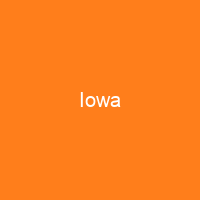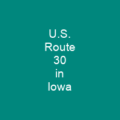Iowa: A State of Rich History and Diverse Opportunities
Geography and Climate
Imagine Iowa as a vast canvas painted with the hues of rolling hills, lush farmlands, and vibrant cities. This state, nestled in the upper Midwest, boasts borders along several major rivers, including the mighty Mississippi and Missouri Rivers. With its diverse landscape, Iowa is home to unique geology, covering 60% of the state with wetlands, natural lakes, and loess hills. The climate here is a mix of humid continental extremes, where summers can reach up to 100°F (38°C) and winters drop below freezing, including a record low of -47°F (-44°C).
History and Settlement
Delve into the rich history of Iowa, from its Native American inhabitants like the Ioway and Ho-Chunk to European colonization. The state’s journey is marked by French and Spanish claims, followed by its admission as the 29th state in 1846. During the Civil War, Iowa played a crucial role, sending over 75,000 volunteers to fight for the Union. Post-war, the population surged dramatically, leading to significant economic shifts from agriculture to manufacturing and biotechnology.
Immigration and Demographics
Iowa’s demographics are a tapestry of diverse ethnicities, with Germans being the largest group, followed by Irish, English, Dutch, Norwegian, Czech, Slovak, Greek, and Italian communities. The state also hosts significant Hispanic populations, particularly Mexicans. Despite these rich cultural layers, Iowa faced challenges like brain drain in the 1990s and a population decline in rural areas during the farm crisis of the 1980s.
Economy and Industries
Explore how Iowa’s economy has evolved over time, from its agricultural roots to becoming a hub for manufacturing, biotechnology, finance, and government services. The state is home to numerous companies like Hy-Vee, Pella Corporation, Workiva, Vermeer Company, Kum & Go gas stations, Von Maur, Pioneer Hi-Bred, and Fareway. Iowa’s economy also benefits from its strong financial sector, with prominent firms such as AEGON, Nationwide Group, Aviva USA, Farm Bureau Financial Services.
Renewable Energy
Renewable energy has become a major economic force in northern and western Iowa, particularly wind power. As of 2019, wind accounted for 42% of the state’s electrical energy production, making it a significant contributor to its GDP.
Education and Attractions
Iowa boasts a high graduation rate (91.3%) with an average teacher salary of $55,647. The state is home to prestigious institutions like the University of Iowa and Iowa State University. Des Moines, the largest city, offers attractions such as Adventureland and Prairie Meadows Racetrack Casino. Other notable cities include Ames, known for Iowa State University and Reiman Gardens; Boone, hosting the Farm Progress Show; and Cedar Rapids, with its art museum and National Czech & Slovak Museum.
Outdoor Activities
Iowa’s natural beauty invites outdoor enthusiasts to explore its diverse landscapes. From the Loess Hills in western Iowa to the Driftless Area in northeastern Iowa, there are numerous parks and attractions like Maquoketa Caves State Park and Fort Atkinson State Preserve. The state also hosts RAGBRAI, a popular bicycle ride across Iowa, attracting thousands of participants each year.
Transportation
Iowa’s transportation network is robust, with four primary interstate highways crisscrossing the state. Major airports include Des Moines International Airport and Quad City International Airport, serving as gateways for both domestic and international travelers. Amtrak’s California Zephyr and Southwest Chief also serve southern and eastern Iowa.
Politics and Culture
Iowa is a pivotal state in American politics, known for its influential caucuses that often shape presidential campaigns. The state has made strides in civil rights, including prohibiting race discrimination and admitting women to the practice of law in 1869. Iowa’s culture is rich with artistic expressions, from heavy metal bands like Slipknot to film productions such as ‘The Bridges of Madison County.’
Conclusion
Iowa stands as a state of remarkable diversity, where history intertwines with modern progress. From its agricultural roots to its thriving industries and vibrant cultural scene, Iowa offers a unique blend that makes it a fascinating place to explore and call home.

You want to know more about Iowa?
This page is based on the article Iowa published in Wikipedia (retrieved on February 28, 2025) and was automatically summarized using artificial intelligence.







